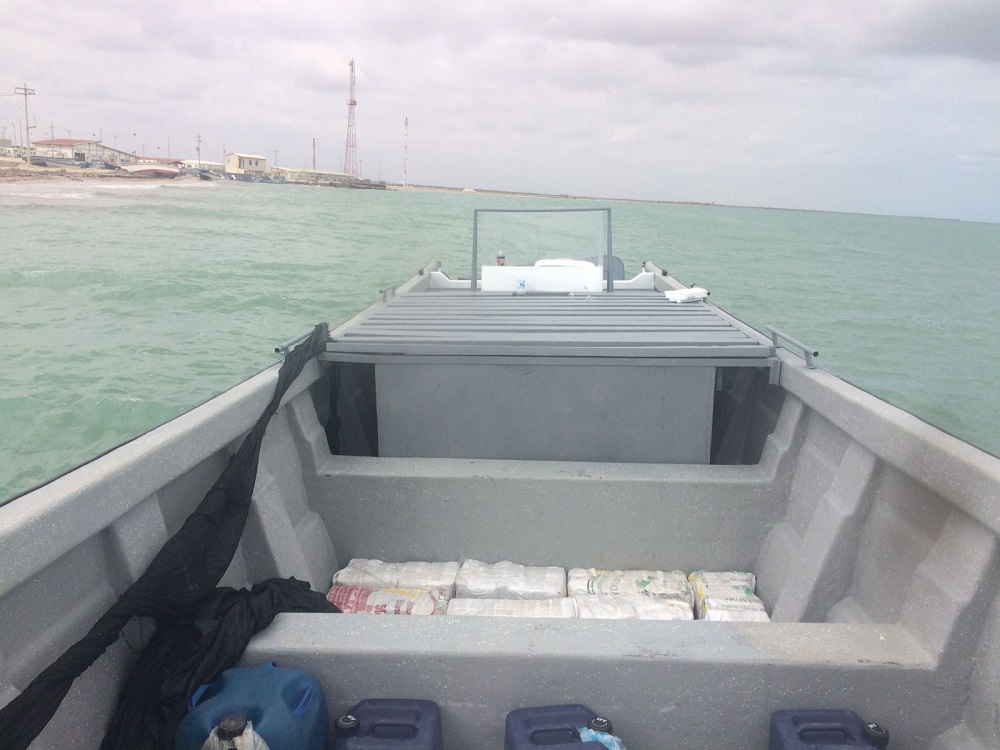BOGOTA — The Colombian National Navy said that it continues its frontal assault against narco-trafficking in the Colombian Caribbean.
“We seized 27,419 kilograms of cocaine [from January to April 2018], a record amount for the Caribbean Naval Force over the last three years,” Commander Jorge Enrique Herrera, operational supervisor of the Caribbean Naval Force, told Diálogo.
Authorities seized 50 percent in international waters, in coordination with various partner nations from Central and North America.
“We can speak directly with the United States, Mexico, Panama, Jamaica, Guatemala, and Honduras. They send air and sea support in real time to mitigate these threats navigating our waters,” Cmdr. Herrera said. “We obtained significant results through maritime treaties and by means of international cooperation with those countries.”
Coordinated efforts also take place within Colombia. “In Colombia, efforts are integrated and shared among various organizations, including the public force and other government agencies that deal with this phenomenon,” Commander Julián Cuartas López, commander of the Cartagena Coast Guard Station, told Diálogo. “This makes us more efficient. It allows us to hit these organizations harder and disrupt their logistics.”
During March and April 2018 alone, the Navy led several operations resulting in the seizure of more than 1.5 tons of cocaine. The three most recent seizures occurred in the waters off La Guajira, Tierra Bomba Island, and Cartagena.
AT SEA
On April 29th, an interagency operation between the Navy, Air Force, and Office of the Attorney General seized a shipment of more than 500 kg of cocaine in Alta Guajira. An SR-560 surveillance and reconnaissance plane from the Third Combat Air Command detected a go-fast boat with possible contraband aboard.
“In cooperation with personnel from the Ballenas Coast Guard Station, [we intercepted] a boat with three motors that traveled at high speed,” Cmdr. Herrera said. The boat was detained 6 nautical miles from the coast. Five people and 25 packages containing 500 kg of cocaine were found aboard.
The Navy stated that the seized drugs belonged to the Los Pachencha criminal group. The shipment, valued at more than $16 million, was headed to Central America, then to the United States.
TIERRA BOMBA CONTAINER
 Colombian authorities intercepted a go-fast boat in La Guajira, Colombia, with five crew members transporting 500 kilograms of cocaine. The Colombian Air Force and Navy prevented the criminals from escaping. (Photo: Colombian National Navy)
Colombian authorities intercepted a go-fast boat in La Guajira, Colombia, with five crew members transporting 500 kilograms of cocaine. The Colombian Air Force and Navy prevented the criminals from escaping. (Photo: Colombian National Navy)On April 16th, Navy units seized a container holding 700 kg of cocaine hydrochloride on Tierra Bomba, an island located in the western Caribbean, near Cartagena. Authorities found the drugs in 25 sacks, divided into 679 packets.
Navy intelligence first monitored the area for a week. Next, troops from the 12th Marine Battalion based in Cartagena deployed to the area to begin searching for drugs with help from the Coast Guard.
“Before nightfall, we managed [to seize] almost 700 kg of cocaine hydrochloride in an uninhabited area near the Tierra Bomba Island cemetery,” Cmdr. Herrera said. The drugs, which belonged to the Gulf Clan criminal group, were stored in a container drug traffickers used as a collection center. According to the Navy, the drugs were bound for Europe, where they would be worth $42 million..
Drug traffickers have partners on the island who help them load seagoing ships en route to the United States and Europe with drugs. “They use a go-fast boat for this,” Cmdr. Herrera said. “When they reach the shipping channel, the boat attaches [to the ship], and, with hooks and aluminum ladders, two or three people climb aboard. Then, they lift the drugs aboard with hooks and mooring ropes and hide them in containers selected beforehand.”
Container in Cartagena
During another operation, Navy intelligence monitored a suspected Gulf Clan shipment for three months, which was to arrive in Cartagena in a container from the Port of Barranquilla, Colombia. Its final destination was Santo Tomás de los Castillos, Guatemala.
At the beginning of March, authorities received confirmation that the shipment was at the Bosque Dock Port Complex in Cartagena. “It hadn’t left the dock yet. The container was successfully set apart so that a special inspection could be carried out, during which all the material [the cocaine] was found,” Cmdr. Cuartas said.
The coordinated operation between the Colombian Navy and National Police seized 413 kg of cocaine hydrochloride, which they discovered during a two-hour search after unloading the cargo. The drugs were packed in 407 packets. The shipment, destined for Europe, would have been worth more than $30 million, according to a Navy press release.
The strategies drug traffickers use present challenges for the authorities. “They have a great number of methods they use throughout the Caribbean. The challenge will always be to forcefully attack all the different methods these organizations use to transport illegal drugs to other countries,” Cmdr. Cuartas concluded.


